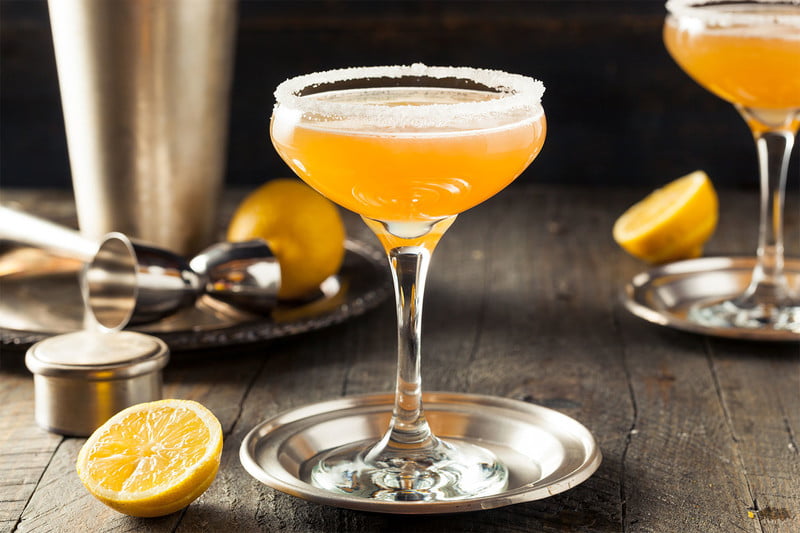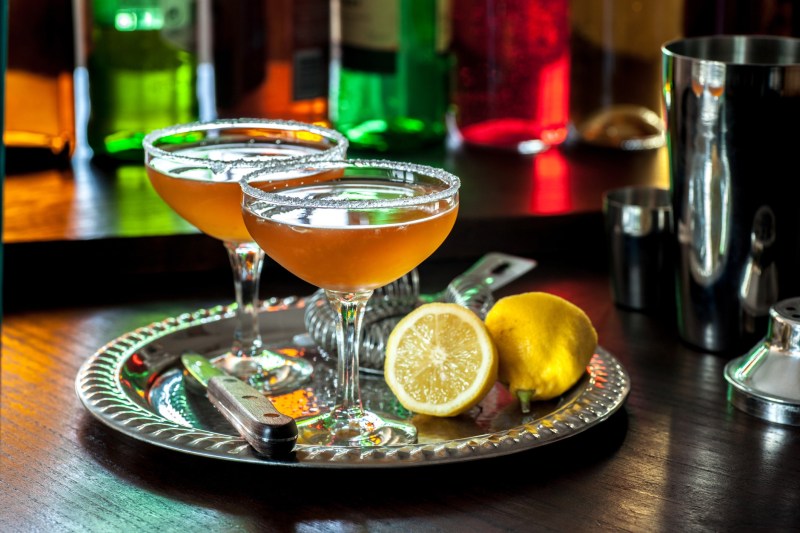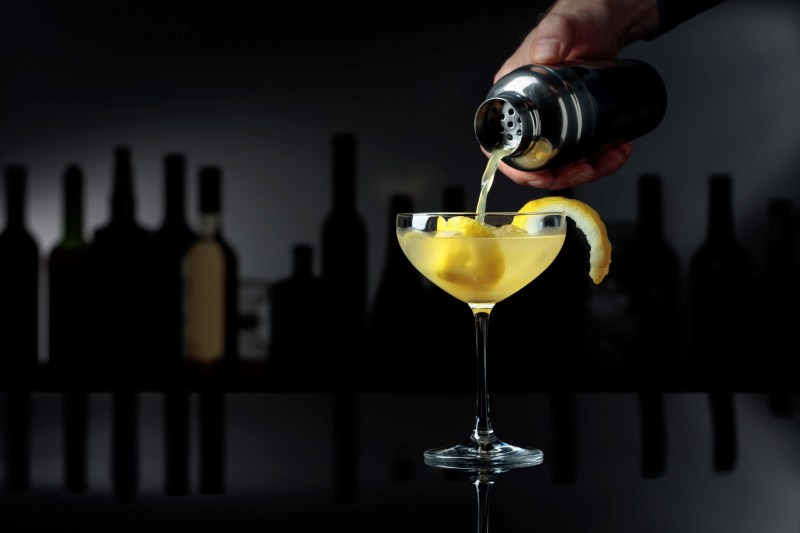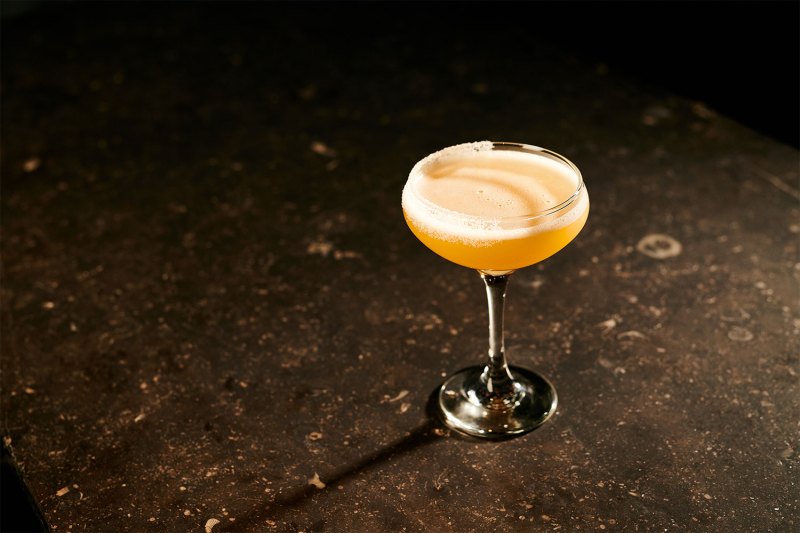
Cognac is back, and it’s anything but your granddaddy’s go-to drink. The grape-based spirit within the brandy family has undergone a renaissance and one of its best forms, the classic Sidecar cocktail, is coming back to life in bars across the country.
Western France’s most famous distilled export jumped an estimated 15% in sales in 2023. It’s being appreciated more and more for its wine-like complexity and inventive cocktail bars all over the globe are finding new ways to use the stuff.
The Sidecar cocktail is owed a fair amount of credit for all of this. The classic cocktail is generally made with cognac, orange liqueur, and lemon juice, and is named after the cool-as-hell motorcycle attachment. Its first documentation goes back to 1922, in an early recipe book. The Ritz Hotel in Paris is believed to be its birthplace, and since, it has become the brandy lover’s equivalent of a daiquiri. And while the basic recipe is a classic for a reason, over the years, there have been a few variations of how to make a Sidecar cocktail.
Sullivan Doh is the brand ambassador for D’USSE Cognac. The French native has curated bar programs in cities all over, including Sydney, London, and Paris. Before joining the
“It is a beautiful, simple cocktail, so it’s hard to make major mistakes, but I would recommend to always use fresh lemon juice for the best result,” Doh said. “From the base, any modification is possible, such as adding another liqueur like crème de peche, muddling fresh fruits, or topping it with soda water and creating a highball. With good foundations, it’s easy to get creative and find what you like.”

British bartender and author Tristan Stephenson says the Sidecar is the only solid drink to come out of Prohibition when American barkeeps were forced overseas to do their thing. “The Sidecar is surely one of the most iconic yet under-ordered cocktails around,” he wrote in The Curious Bartender.
He calls the drink a “man’s aperitif,” with the citrus brightening up what might otherwise be a post-meal sipper. Like Doh, Stephenson prefers a higher cognac-to-other-ingredient ratio. Some of the earliest recipes suggest equal parts of all three, but that can lead to something he calls “flabby.” In his book, Stephenson suggests a recipe that uses tartaric acid in place of lemon juice to hold on to the nuance of the cognac.
We believe a modest amount of fresh citrus does not harm the spirit, but do play around with different acids if you have the chance. Either way, you’ll learn to love the honey-colored classic. As Stephenson suggests, try it on its own or even with a side of fries. Cheers!

Doh’s ideal Sidecar
What’s his twist on the iconic drink? Doh likes to go light and aromatic. “My take on the classic Sidecar is the addition of orange blossom water to add delicate floral notes,” he said.
Ingredients:
- 1 1/2 ounces cognac
- 1 ounce triple sec (he suggests Cointreau)
- 3/4 ounce fresh lemon juice
Method:
- Vigorously shake in a shaker full of ice until it starts sticking to your fingers from the cold.
- Pour into a chilled coupe glass, with half the rim dipped in fine raw sugar.
- Either simple strain into the coupe, which will leave fine pieces of ice that add crispiness and freshness to the drink, or fine strain for a more delicate and bright sip.

Splendid Sidecar
This take on the classic Sidecar adds some citrus kick with the addition of orange blossom water.
Ingredients:
- 1 1/2 ounces cognac
- 1 ounce triple sec (he prefers Cointreau)
- 3/4 ounce fresh lemon juice
- 2 teaspoons orange blossom water
Method:
- Shake vigorously and fine strain in a coup glass with half a rim of fine sugar.

Ideal Sidecar
From the craft cocktail bar Death & Co. comes this take on the Sidecar. The recipe goes for the orange taste with less sweetness by using dry Curaçao.
(Created by Death & Co. via Cocktail Codex)
Ingredients:
- 1 1/2 ounces Pierre Ferrand Ambre cognac
- 1 ounce Pierre Ferrand dry curaçao
- 3/4 ounce fresh lemon juice
- 1 teaspoon simple syrup
- Orange twist for garnish
Method:
- Shake all the ingredients with ice, then strain into a chilled coupe.
- Express the orange twist over the drink, then gently rub it around the rim of the glass and place it into the drink.

Biggles Sidecar
Before we get to the recipe, we should probably explain the unusual name. The Biggles Sidecar cocktail gets its name from James Biggles a fictional pilot and adventurer from a long line of books, which were first published in the 1930s. According to Difford’s Guide, the cocktail was first mixed in London at The Cabinet Room in 2008. It got its name because Difford was a big fan of the Biggles book series as a child. The Biggles Sidecar gets an additional kick thanks to the addition of ginger liqueur, which gives some spice to the mix.
Ingredients:
- 2 ounces cognac
- 1/2 ounce ginger liqueur
- 1/2 ounce lemon juice
- 1/4 ounce rich sugar syrup (2 parts sugar to one part water)
- 1 dash of Peychaud’s bitters
Method:
- Place all the ingredients into a shaker with ice.
- Shake and strain into a chilled glass.


